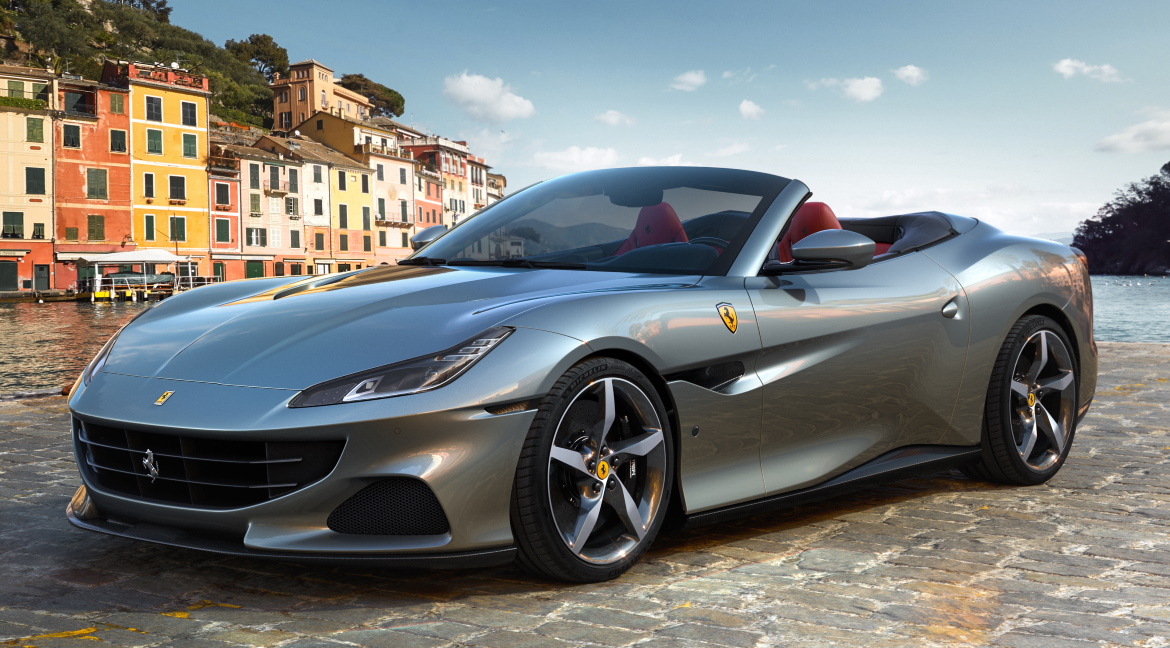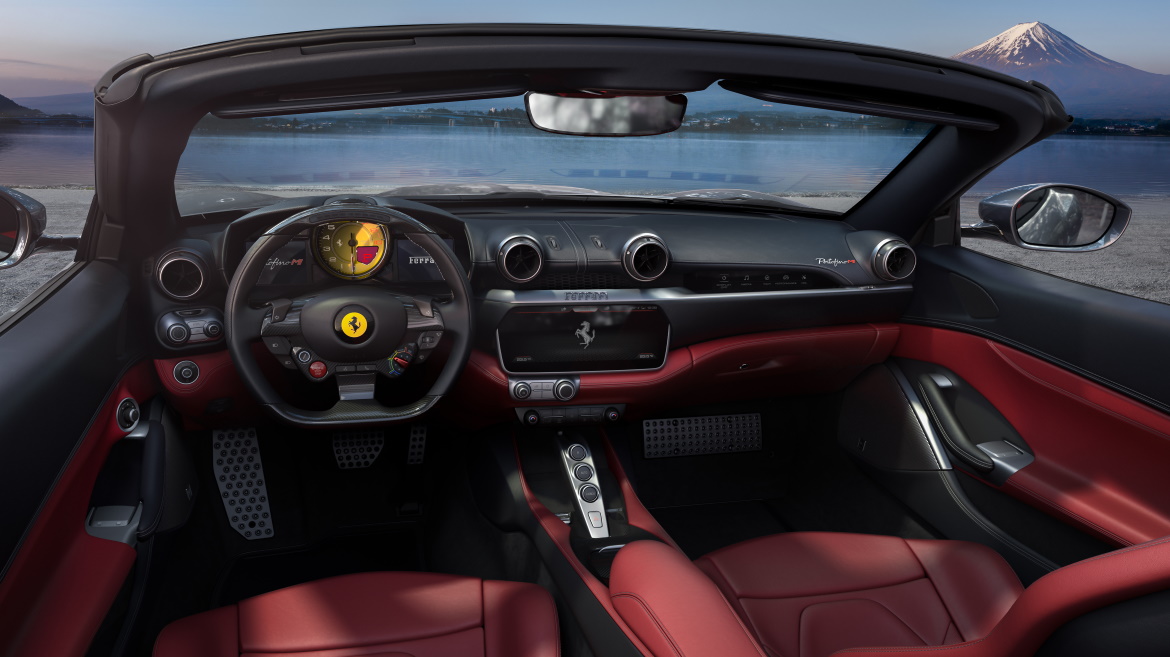It’s time for a mid-career restyling for Ferrari Portofino. The update has also led to the addition of the letter M (modified) which, in Ferrari jargon, serves to codify designs that have undergone an evolution that has helped to improve their performance. And the technical innovations are certainly not lacking in this new evolution of the Portofino: among them are the new engine capable of delivering 620 bhp, the new eight-speed gearbox and the five-position Manettino with “Race” mode, the first ever for Maranello’s GT spiders.
The harmony that characterises the Ferrari Portofino M is the result of a total approach to design in which each element is treated as part of a whole, based on the great success of the Portofino’s design. The enhanced performance of the Ferrari Portofino M compared to the Ferrari Portofino M has led the designers of the Style Centre led by Flavio Manzoni to carry out precise and targeted interventions aimed at highlighting its characteristics and underlining its sportiness. The front bumper is equipped with imposing and sculptural side intakes that give the front end a decisive and aggressive look. A new air vent has been integrated at the wheel arches, born of the need to reduce overall aerodynamic resistance. Part of the air flow coming out of the front radiant masses is conveyed and accelerated in it, so as to increase its extraction power.
At the rear, the new exhaust has made it possible to remove the silencer box with a consequent reduction in overall dimensions, an overall streamlining of the bumper volume and a lightening of the shape that has given the opportunity to harmonise the style with that of the front bumper, to the benefit of overall aesthetic consistency. While the open car appreciates the compactness and organicity of the whole as well as the GT vocation of the car, the Ferrari Portofino M also reveals great design consistency in the development of the interior. The Style Centre has first of all identified some fundamental prerequisites for the success of the project: formal and functional coherence between exterior and interior, weight reduction and more space for the occupants.
The interiors were created starting from a multi-level structure of the dashboard, consisting of an upper half and an intermediate detachment to lighten the perceived mass of the lower half. This decomposition, obtained by volumetric subtraction, made it possible to organise the on-board devices in a rational way and at the same time define the architectural layout characterised by a full width development. A central aluminium ‘sabre’ runs horizontally, dividing the areas dedicated to the instrument panel, air conditioning vents and passenger display in the upper section.














